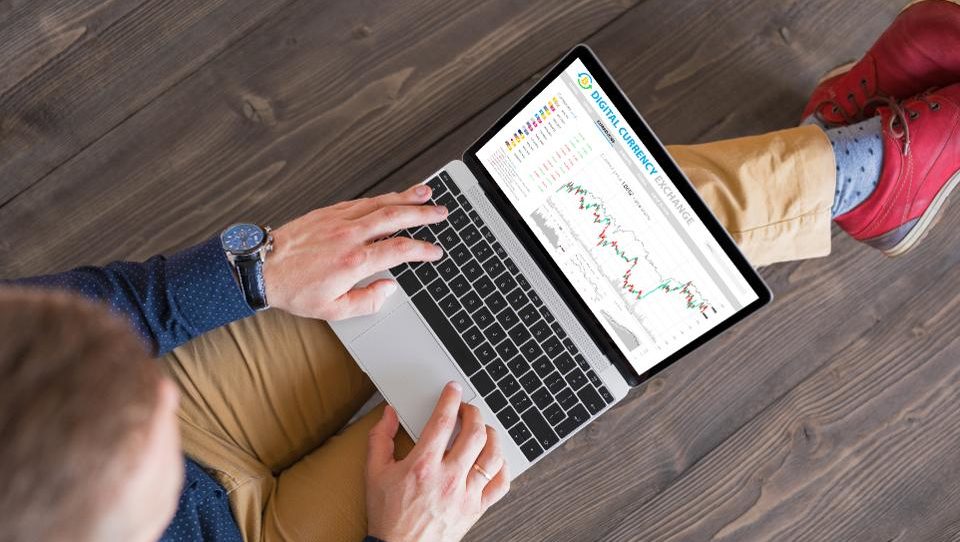
|
|
You might be using an unsupported or outdated browser. To get the best possible experience please use the latest version of Chrome, Firefox, Safari, or Microsoft Edge to view this website. |

Opening a brokerage account may feel like a daunting process, but it doesn’t have to be. Before you begin, you need to understand the kinds of brokerage accounts available and which features are most important for your investing goals.
“What are you trying to accomplish with the account? What are you looking to trade? Certain custodians are going to be better suited for certain types of things,” says Charles Failla, a certified financial planner with Sovereign Financial Group in New York City.
Let’s take a closer look at brokerage accounts and what you need to choose the right account for your investing needs.
What Is a Brokerage Account?
A brokerage account is an account you can use to purchase and hold investments, such as stocks, bonds, exchange traded funds (ETFs) and mutual funds. When you open a brokerage account with a brokerage firm, the firm buys and sells investing assets in the market on your behalf. The firm is also the custodian for the securities you own in your brokerage account.
There are two types of brokerage accounts: Taxable accounts and retirement accounts. You can open both kinds with a brokerage firm, but the investments you hold in either account are segregated for tax purposes.
With a taxable brokerage account, you pay regular income tax and capital gains tax on the dividends, interest and gains on the sale of your investments. You can deposit as much or as little money in your taxable brokerage account as you wish.
With a retirement account, you deposit money in a traditional individual retirement account (IRA) or a Roth IRA. If you’re self-employed, you could choose to open a solo 401(k) or a SEP IRA. These plans all have different rules regarding taxes and contribution limits that you need to understand. They also have rules regarding who qualifies to open and contribute to such accounts.
Cash Brokerage Account vs Margin Account
Taxable brokerage accounts come in two varieties: cash accounts and margin accounts. With a cash account, you purchase investments with the money you’ve deposited in the account. If you have $500 in the account, you can buy $500 worth of securities—and no more.
A margin account lets you borrow money from the brokerage to leverage your investments. Some investors use margin accounts to execute more complicated trading strategies.
“Buying on margin” means you’ve borrowed money to buy investments. You pay interest on the loan, and the investments you purchase act as collateral. In addition, you need a margin account to engage in short selling.
Using debt in your trading strategy has risks. If the market declines and investments bought on margin lose too much value, the brokerage may require you to pay back your debt right away—this is known as a “margin call.” The brokerage can also sell your investments to cover an account shortfall without telling you ahead of time.
If you want to buy and hold stocks, bonds or ETFs, a cash account is all you need. “Anybody that’s starting out, I think margin is just a way to get into trouble fast,” says Michelle Fait, a certified financial planner with Satori Financial in Seattle. “I think most investors would do better with some guard rails, and we all know debt can get you in trouble if you’re not smart about how to use it.”
Brokerage Account Fees & Commissions
Many brokerage accounts today tout their $0 commission trades, but keep in mind that this doesn’t mean all trading is free. There are other costs and fees involved beyond commissions, and you should understand the other fees and expenses charged by your brokerage. This is particularly true if you’re planning to dabble in investments such as options or mutual funds.
Take Fidelity, one of the leading online brokerages. Fidelity charges no commissions for trading stocks, options and ETFs. However, Fidelity charges a $0.65 fee for every options contract transaction, and $1 per bond or CD in secondary market trading. When considering a brokerage account, find the fee schedule and understand the costs involved with different kinds of transactions.
Some brokerages may also offer incentives for you to open an account. While this isn’t the only thing you should consider when you’re comparing firms, if you’re down to two mostly identical choices, a good onboarding incentive can tilt the scales. For instance, in May 2020, both E-Trade and Ally Invest offered new investors a $50 bonus if they deposit between $10,000 and $24,999 of new money.
Brokerage Account vs. Robo-advisor
If you are a beginning investor, carefully consider whether a robo-advisor might better suit your needs than a brokerage account. Robo-advisors use investing algorithms to suggest a portfolio that fits your needs, and then manage the portfolio for you, charging annual fees for the service.
When you open an account with a robo-advisor, the platform asks you a series of questions about your investing goals, your time horizon, and your risk tolerance. Depending on these factors, the robo-advisor suggests one or more investment portfolios, usually comprising low-cost ETFs.
If you feel like you need extra investing guidance, a robo-advisor could be a good option. Robo-advisor annual fees can amount to 0.25% or more of your portfolio’s value, and you may also have to pay expense ratios for ETFs.
“Robos might be an option for people who know they need to invest but they really don’t want to be that involved,” says Fait. If you’re looking to take a more hands-on role in building your investment portfolio, choose a brokerage account.
Brokerage Account Features
Fees are an important factor for choosing a brokerage account, but they aren’t everything. Consider these key features when choosing a brokerage account:
- Technology: How is the company’s website? How’s the app? Poke around on the website and consider downloading the app to see how easy it is to use. “What is their interface like?” Failla says. “I’m sure they’re all quite good, so it’s more a matter of preference.”
- Education: What kind of resources does the company offer? Are there educational articles? Do you want advice—and do they offer it? Do they offer webinars or other tutorials? If you’re looking to learn about investing, you may want a brokerage with some “Investing 101” offerings.
- Research: If you’re a more advanced investor, you may want more tools for research and analysis. Some brokerages offer extensive analyst ratings, plus access to third-party research and screeners to help you choose among the many investment options that are out there.
- Familiarity: Do you already have an account there, such as your employer’s 401(k)? “Do you have an account at a big firm, and do you like that platform?” Fait says. “With the idea of wanting people to have it be as easy and as seamless as possible, if they’re already online at a brokerage, that might be a good place to start.”
- Proprietary fund options: Many larger firms offer their own proprietary low- or no-fee mutual funds and ETFs as investment options. If you have your eye on someone’s house fund family, that can make a difference. “I usually recommend Fidelity or Vanguard, because I think the fund families that come with them offer some good choices across the board for passive investing, in terms of index funds or sector-based investments,” Fait says.
- Branch Office Availability: If you’re comfortable with an online-only experience, that’s fine. But some people, especially younger investors, may want a firm with branch office locations they can visit if they need extra assistance or insight.
How to Apply for a Brokerage Account
Applying for a brokerage account is easy. “You can do it within 10 minutes these days,” Failla says. “It’s really pretty simple.” You’ll generally need to provide the following information:
- Your Social Security Number
- Other personal information, including your phone number and home address
- Your employer’s name and address, if you’re employed
- Your annual income and personal net worth
You may have to answer other questions to verify your identity. You may also have to select a “core position,” or an account that will hold your money until you invest it, such as a money market fund or interest-earning cash account. You can change this selection after the account is open.
How to Fund Your Brokerage Account
You can open a brokerage account without immediately funding it during the application process. When you decide to fund the account, the brokerage asks you to link a checking or savings account to your brokerage account, or gives you the option to wire funds to your account. You can also transfer a balance from another brokerage account if you’re changing companies.
Once you’ve funded your account, choose investments accordingly. What you invest in will depend on your time horizon and goals. If your firm offers some educational tools, use them to inform your investing choice. There are no limits to how much you can invest in a traditional taxable brokerage account, but if you have questions about what investments are right for you or how tax treatment will work, a financial advisor can help.










